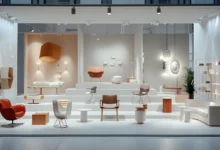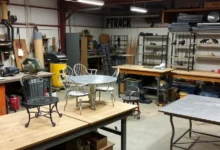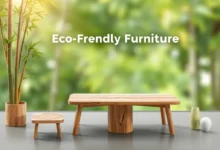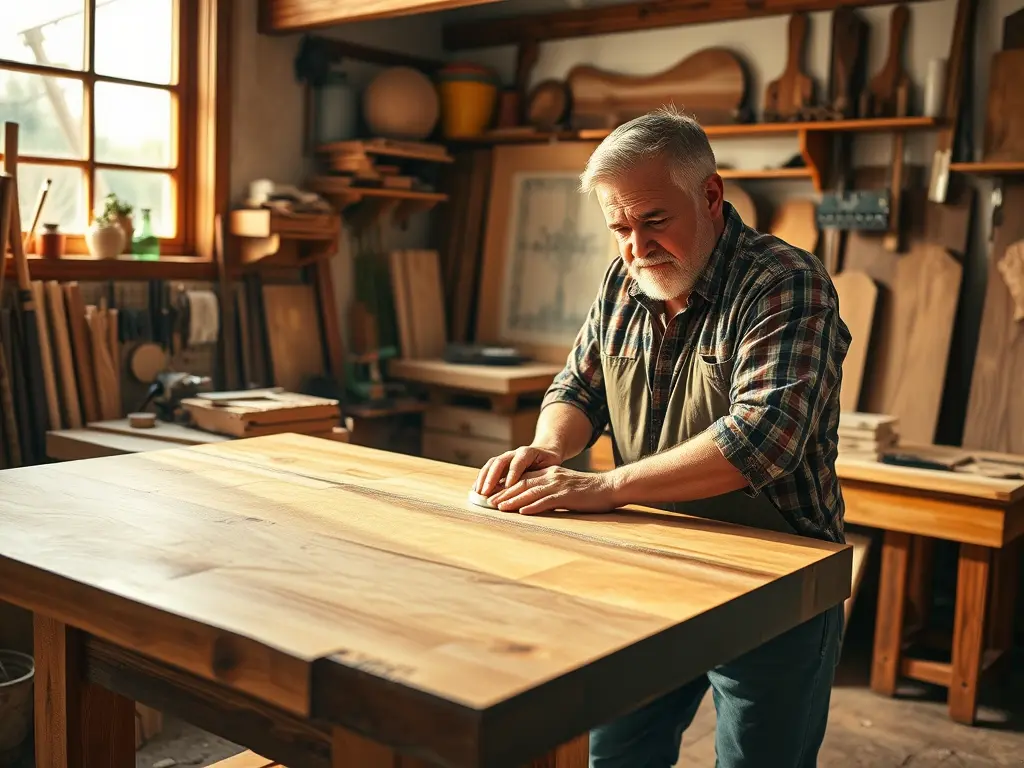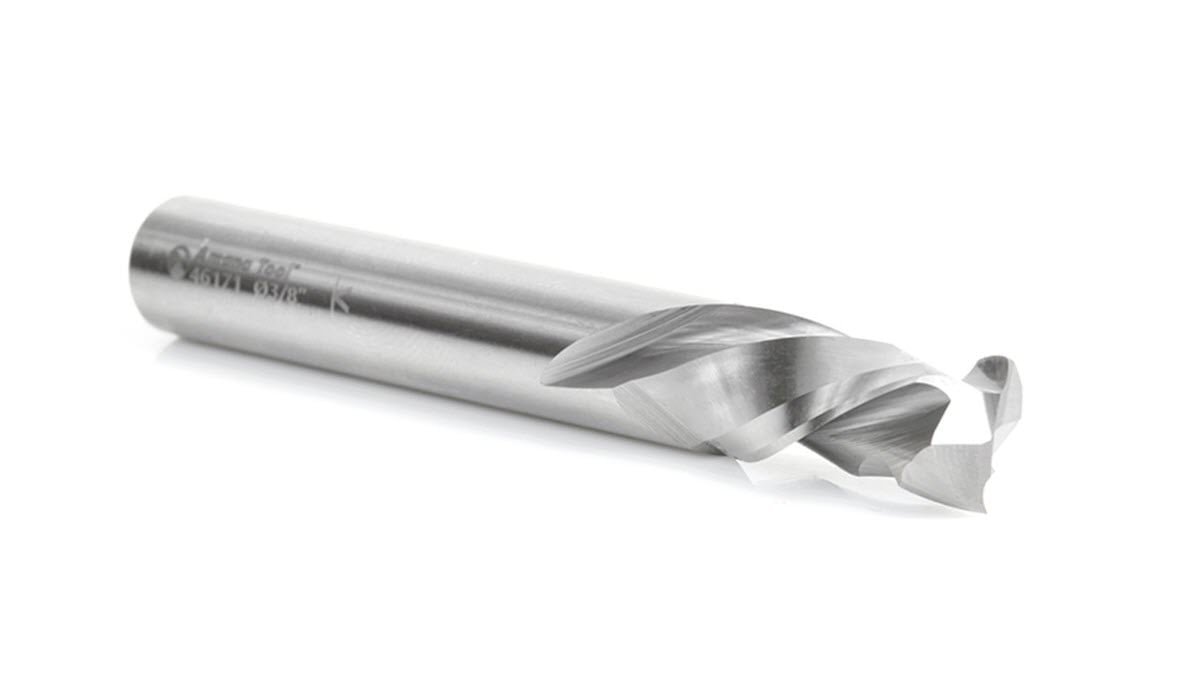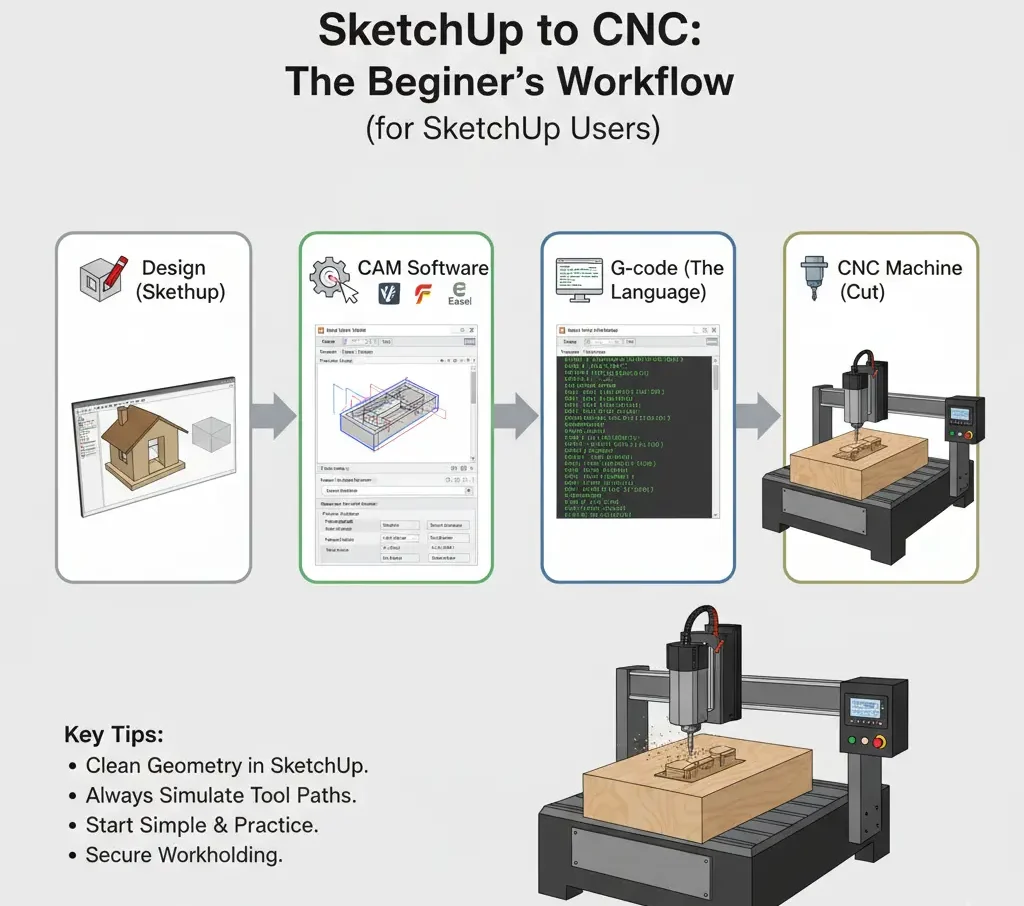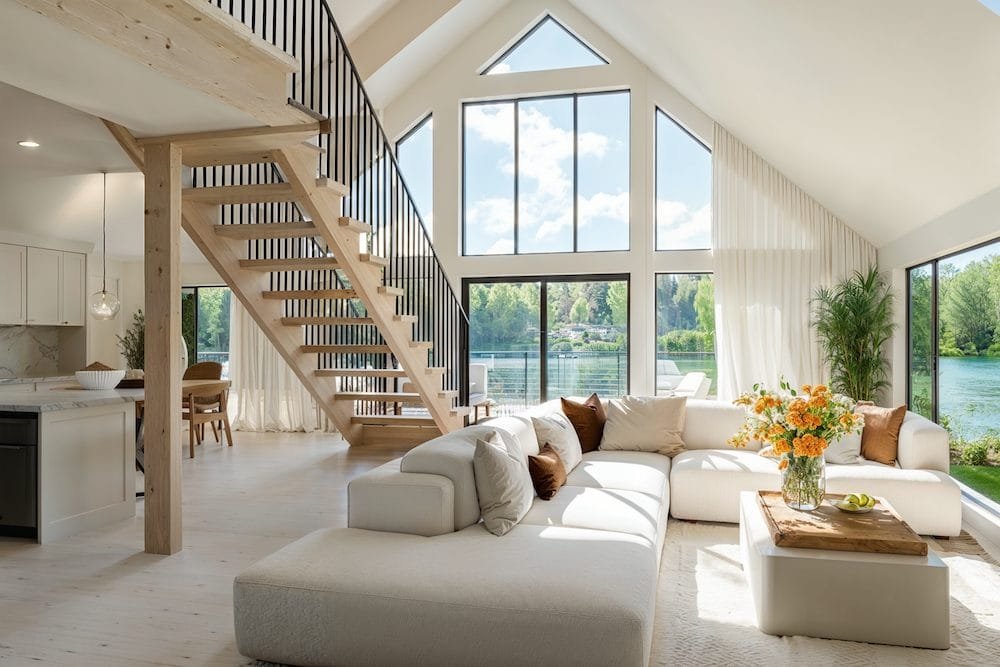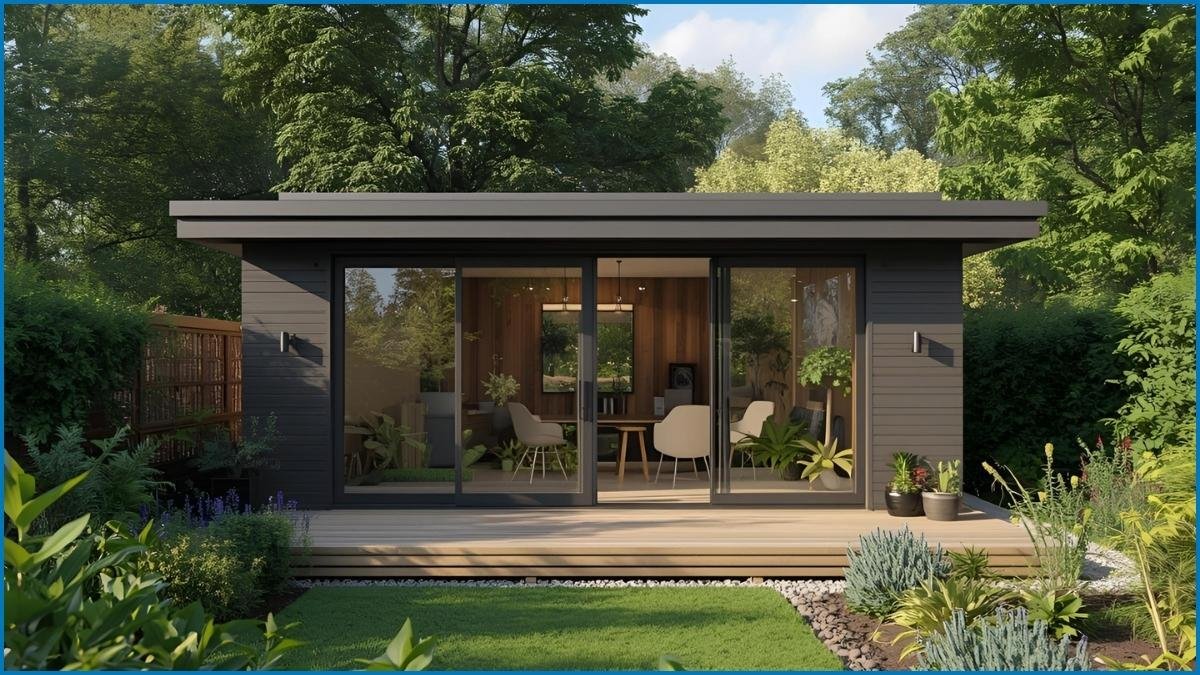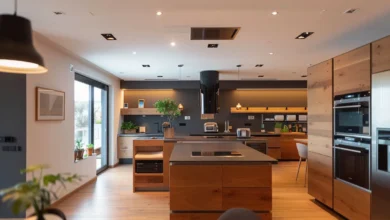Create with class – a guide to the best furniture materials
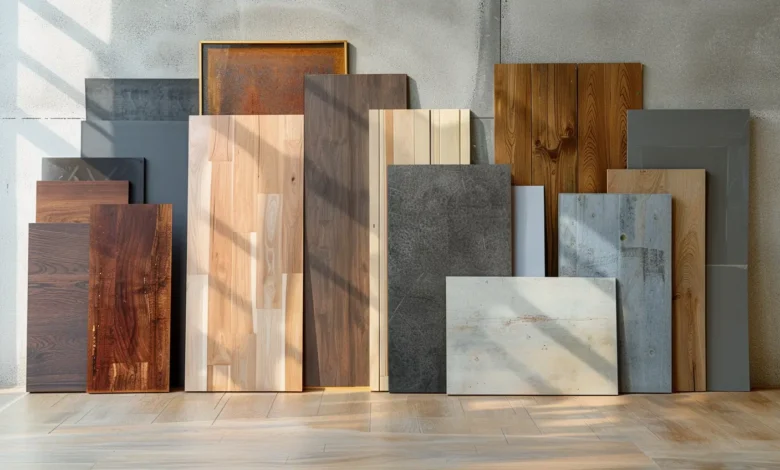
Choosing the right materials for furniture production is a key element that influences its durability, aesthetics, and functionality. In the world of carpentry, where the possibilities are almost limitless, finding the perfect material can seem like a challenge. However, understanding the properties of different materials and their applications can make this process much simpler and more rewarding.
Natural wood has been valued for centuries for its unique structure and durability. Each species of wood, from oak to mahogany, has its own unique characteristics that can transform an ordinary piece of furniture into a work of art. Furniture boards such as MDF and plywood offer economical and versatile solutions that work well in both simple and more advanced projects. Finally, metal, although often associated with modern design, also finds its place in classic interiors thanks to its durability and elegant appearance.
Knowing the variety of materials available on the market, it’s worth taking the time to thoroughly understand them. In this article, we’ll take a closer look at the most popular materials used in furniture production, analyzing their advantages and disadvantages and suggesting what to consider when choosing them. This will help you make an informed decision that will guarantee your satisfaction with the final result and the durability and beauty of your furniture for years to come.
Natural wood
Natural wood is one of the most valued and versatile materials in carpentry. Its natural beauty, durability, and ease of workability make it an ideal choice for producing a wide variety of furniture. In this section, we’ll take a closer look at the different species of wood, their advantages and disadvantages, and practical tips for using them.
Types of Wood
Natural wood comes in many species, each with its own unique properties. Choosing the right wood depends on the furniture’s intended use, style, and budget. Here are some of the most popular wood species used in furniture production:
Oak:
Oak is one of the most valued wood species. It is characterized by high hardness, durability, and resistance to damage. Its natural color, ranging from light brown to dark brown, gives furniture an elegant and classic look. Oak is often used for tables, chairs, and flooring. Its higher price and difficulty in workability can be a drawback.
Beech:
Beech is another popular wood species, known for its uniform grain and light color. It is slightly less hard than oak, but still very durable. Beech is ideal for children’s furniture, kitchen furniture, and office furniture. It is also more affordable, making it an attractive choice for many projects. A downside is its susceptibility to moisture, which requires additional protection.
Pine:
Pine is one of the most commonly used wood species, primarily due to its availability and low price. It is a soft wood, which makes it easier to work with, but also makes it less resistant to mechanical damage. Pine has a light color with characteristic knots, giving furniture a rustic look. It is most often used for bedroom furniture, such as beds and chests of drawers. Pine’s disadvantage is its susceptibility to scratches and dents.
Advantages of Wood
Using natural wood in furniture offers many benefits that make it a unique material:
Durability:
Wood is an extremely durable material that can last for decades with proper care. Furniture made from solid wood species such as oak or beech is resistant to everyday wear and tear.
Natural Beauty:
Each piece of wood is unique thanks to its natural grain and texture. Wooden furniture has a warm, cozy appearance that adds character to any interior.
Eco-Friendly:
Wood is a renewable and biodegradable material. By choosing wood from certified sources, you can support sustainable forest management and protect the environment.
Ease of Workability:
Wood is relatively easy to work with, allowing for the creation of complex shapes and details. This allows carpenters to create a variety of furniture designs tailored to individual customer needs.
Disadvantages of Wood
Despite its numerous advantages, natural wood also has its disadvantages, which should be considered when choosing a material for furniture production:
Price:
Wood, especially hardwood species like oak or mahogany, can be expensive. High quality comes with a higher price, which may limit some budgets.
Susceptibility to Moisture and Pests:
Wood is an organic material, making it susceptible to moisture and pests such as woodworm. To prevent damage, wooden furniture requires regular maintenance and protection.
Dimension Changes:
Wood reacts to changes in humidity and temperature, which can lead to cracking, warping, and dimensional changes. Therefore, proper storage and use of wooden furniture are important.
Practical Tips for Using Wood
When choosing wood for furniture, it’s worth considering a few key factors that can impact the final outcome of your project:
Wood Selection:
Choose good-quality wood, free from knots, cracks, and other defects. Ensure the wood is thoroughly dried to prevent future cracking and deformation.
Protection and Maintenance:
To extend the life of your wooden furniture, regularly apply appropriate protective products such as oils, waxes, or varnishes. These will protect the wood from moisture, stains, and mechanical damage.
Style and Design:
Wood is a versatile material that complements many interior design styles. Whether you prefer classic, rustic, or modern design, wood can be an excellent choice. Match the wood species and finish to the style you want to achieve.
Furniture boards
Furniture boards are a popular alternative to natural wood, valued for their versatility and cost-effectiveness. In this section, we’ll take a closer look at the different types of furniture boards, their advantages and disadvantages, and practical applications in furniture production.
Types of furniture boards
Furniture boards are available in various types, each with its own unique properties. Here are the most popular types used in furniture production:
Chipboard:
Particleboard is one of the most commonly used materials in furniture production. It is made of compressed wood chips bonded with synthetic resin. It is characterized by low cost and wide availability.
- Advantages: Particleboard is lightweight, easy to work with, and available in various thicknesses. It is also relatively inexpensive, making it an attractive choice for projects on a tight budget.
- Disadvantages: Unfortunately, particleboard is less durable than other materials and susceptible to mechanical damage and moisture. To increase its durability, it is often covered with laminate or veneer.
MDF (Medium Density Fibreboard):
MDF
MDF, or medium-density fibreboard, is a more advanced alternative to particle board. Made from finely ground wood fibres bonded with resin, it offers better mechanical properties.
Advantages: MDF has a smooth surface that is ideal for painting and laminating. It is also stronger and more resistant to damage than particle board. MDF is relatively easy to process, allowing for the creation of complex shapes and details.
Disadvantages: MDF is heavier and more expensive than particle board. Like particle board, it is susceptible to moisture, which requires additional protection in humid conditions.
Plywood
Plywood is a material made of several layers of thin wood sheets glued together under high pressure and temperature. It is one of the most durable panel materials available on the market.
Advantages: Plywood is very strong and stable, resistant to warping and cracking. It can be used both indoors and outdoors. It is also relatively lightweight, which makes it easy to transport and assemble.
Disadvantages: Plywood is more expensive than particle board and MDF. Its surface may require additional finishing to achieve smoothness and an aesthetic look.
Advantages of Furniture Boards
Furniture boards have many advantages that make them a popular choice in furniture production:
Cost-effectiveness:
Furniture boards are usually cheaper than natural wood, making them an attractive option for budget-friendly projects. This allows more projects to be carried out at a lower cost.
Versatility:
The availability of different types of boards with varying properties makes them widely applicable. They can be used for kitchen, office, and bedroom furniture, as well as for decorative interior elements.
Ease of processing:
Furniture boards are easy to work with, enabling the creation of complex shapes and details. They can be cut, milled, drilled, and joined with ease, offering great design flexibility.
Variety of finishes:
Furniture boards are available in different finishes, such as laminates, veneers, lacquers, or paints. This makes it possible to achieve various aesthetic effects tailored to the client’s style and needs.
Disadvantages of Furniture Boards
Despite their many advantages, furniture boards also have some drawbacks worth considering:
Lower durability:
Compared to natural wood, furniture boards are less durable and more prone to mechanical damage. In heavily used furniture, they may wear out faster.
Moisture sensitivity:
Most furniture boards, especially particle board and MDF, are vulnerable to moisture. In humid conditions, they can swell and lose their mechanical properties. Therefore, proper protection such as laminates or waterproof coatings is essential.
Environmental impact:
The production of furniture boards involves resins and other chemicals, which may negatively affect the environment. When choosing boards, it’s worth paying attention to eco-certifications and opting for environmentally friendly products.
Practical Tips for Using Furniture Boards
When selecting furniture boards, keep in mind a few key factors that can affect the final result:
Choosing the right type of board: Particle board works well for simple, budget-friendly projects, while MDF and plywood are better suited for more demanding applications.
Moisture protection: Use laminates, veneers, and waterproof lacquers to extend the life of furniture made from boards.
Aesthetic finishing: Select finishes that are not only visually appealing but also durable and easy to maintain.
Metal
Metal is a material increasingly used in furniture production. Thanks to its strength, modern appearance, and versatility, metal elements have become a popular choice in many interior design styles.
Types of Metal
Stainless steel:
Highly durable and resistant to corrosion, stainless steel has a sleek, modern look. It’s commonly used in kitchens and office furniture.
Advantages: Extremely durable, rust-resistant, hygienic, and easy to clean.
Disadvantages: High cost and weight; its cool look may not fit cozy interiors.
Aluminium:
A lightweight yet strong metal often used in garden, office, and modern furniture.
Advantages: Lightweight, corrosion-resistant, easy to process, and more affordable than stainless steel.
Disadvantages: Less durable than steel, prone to scratches, and requires protection against oxidation.
Brass:
An alloy of copper and zinc with a warm golden colour, often used for decorative details like handles, legs, or frames.
Advantages: Elegant appearance, corrosion-resistant, antibacterial.
Disadvantages: Expensive, requires regular maintenance, and can scratch easily.
Advantages of Metal
Durability: Very resistant to mechanical damage and corrosion.
Modern appearance: Fits contemporary and industrial interior design.
Versatility: Can be combined with wood, glass, or fabrics.
Easy maintenance: Generally requires only regular cleaning.
Disadvantages of Metal
High weight: Stainless steel, for example, can be heavy and difficult to move.
Cost: High-quality metals like stainless steel and brass are expensive.
Cold look: Industrial design may not suit all interiors.
Practical Tips for Using Metal
Choosing the right type: Stainless steel is ideal for kitchens and bathrooms; aluminium for outdoor and office furniture.
Combining with other materials: Pairing metal with wood or glass creates unique and stylish designs.
Care and maintenance: Stainless steel and aluminium need little care, while brass requires polishing to maintain its shine.
Conclusion
Choosing the right materials for furniture production is a key step that affects durability, aesthetics, and functionality.
Natural wood offers timeless elegance and long-lasting durability.
Furniture boards provide cost-effective and versatile options, though they need protection against moisture and damage.
Metal brings strength and a modern look, often used in combination with other materials.
Ultimately, the decision should be based on the project’s specific requirements, budget, and desired style. Only then can we ensure that the final product is not only beautiful but also durable and functional.

